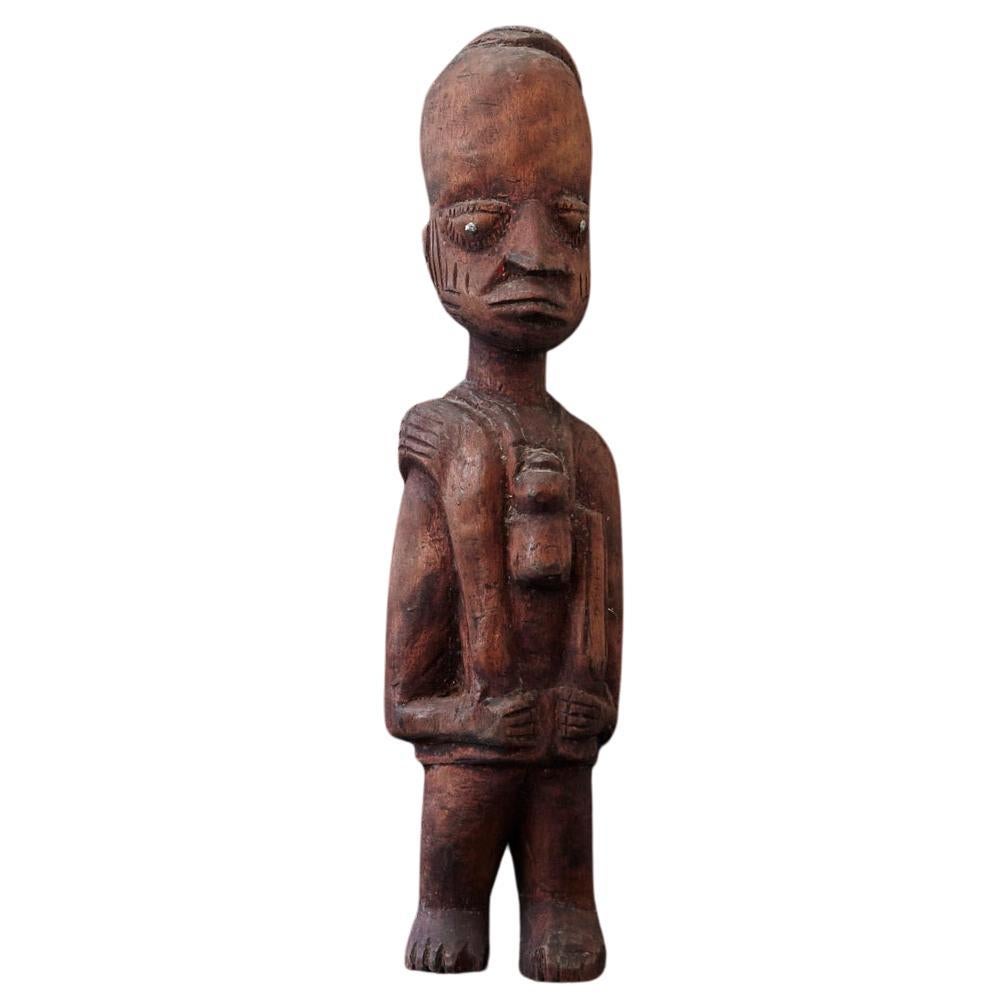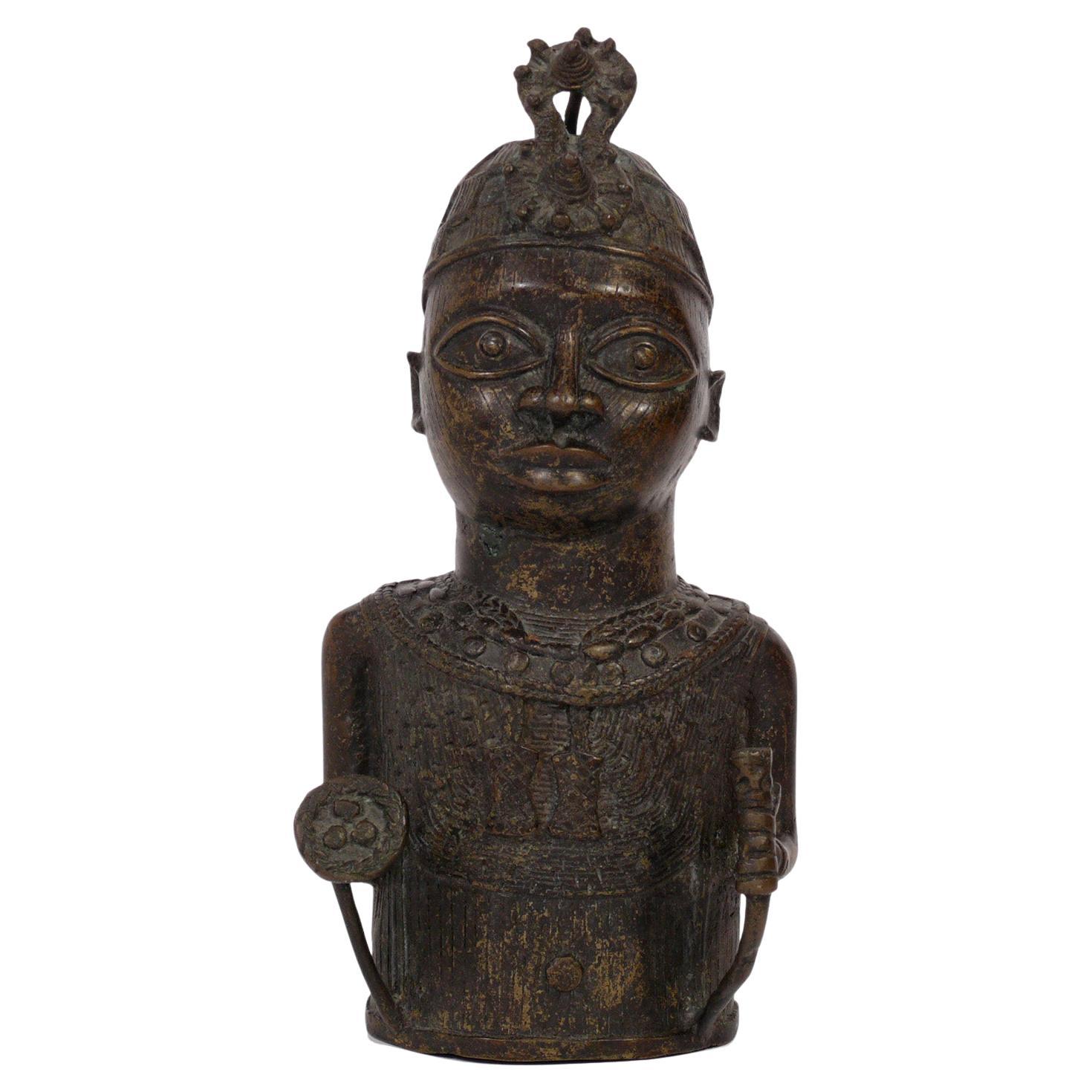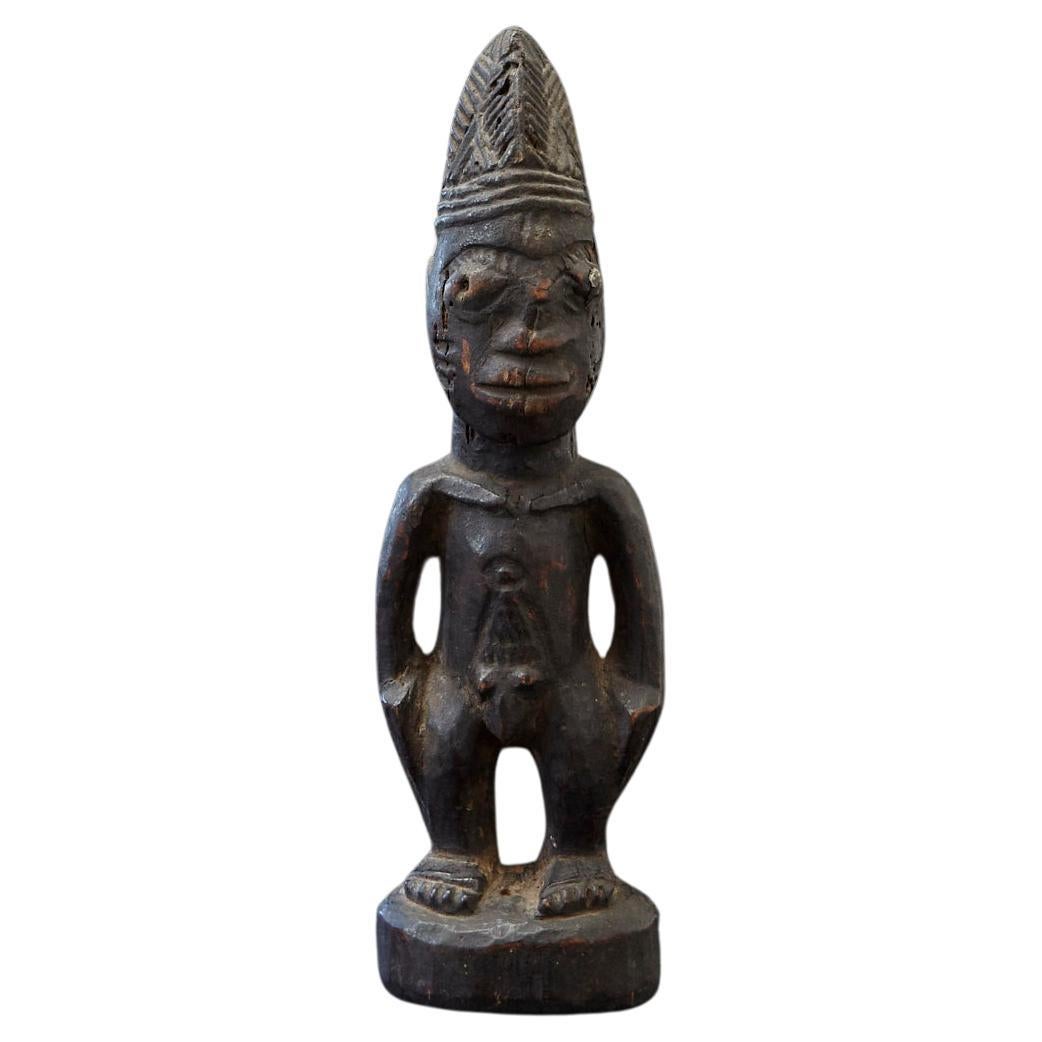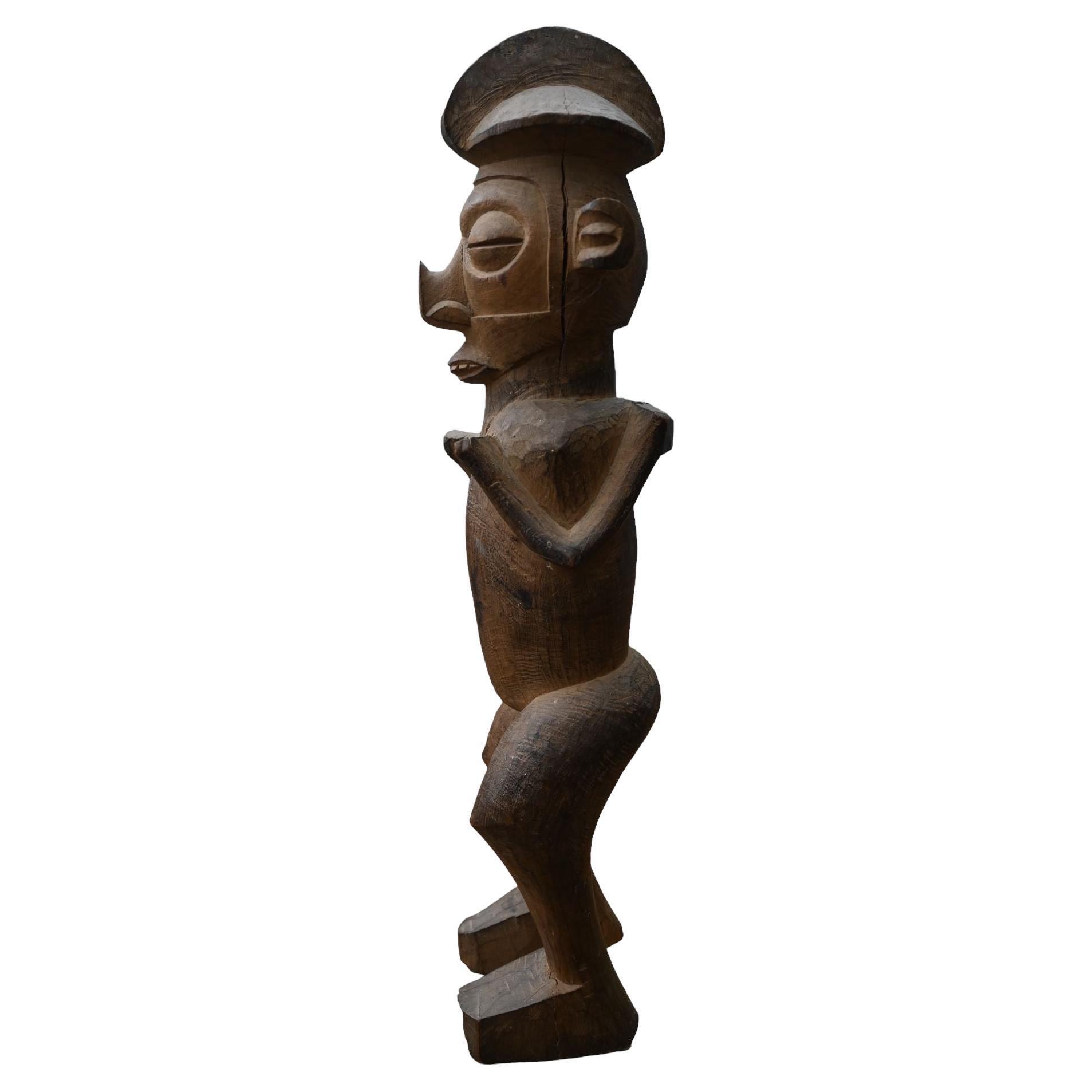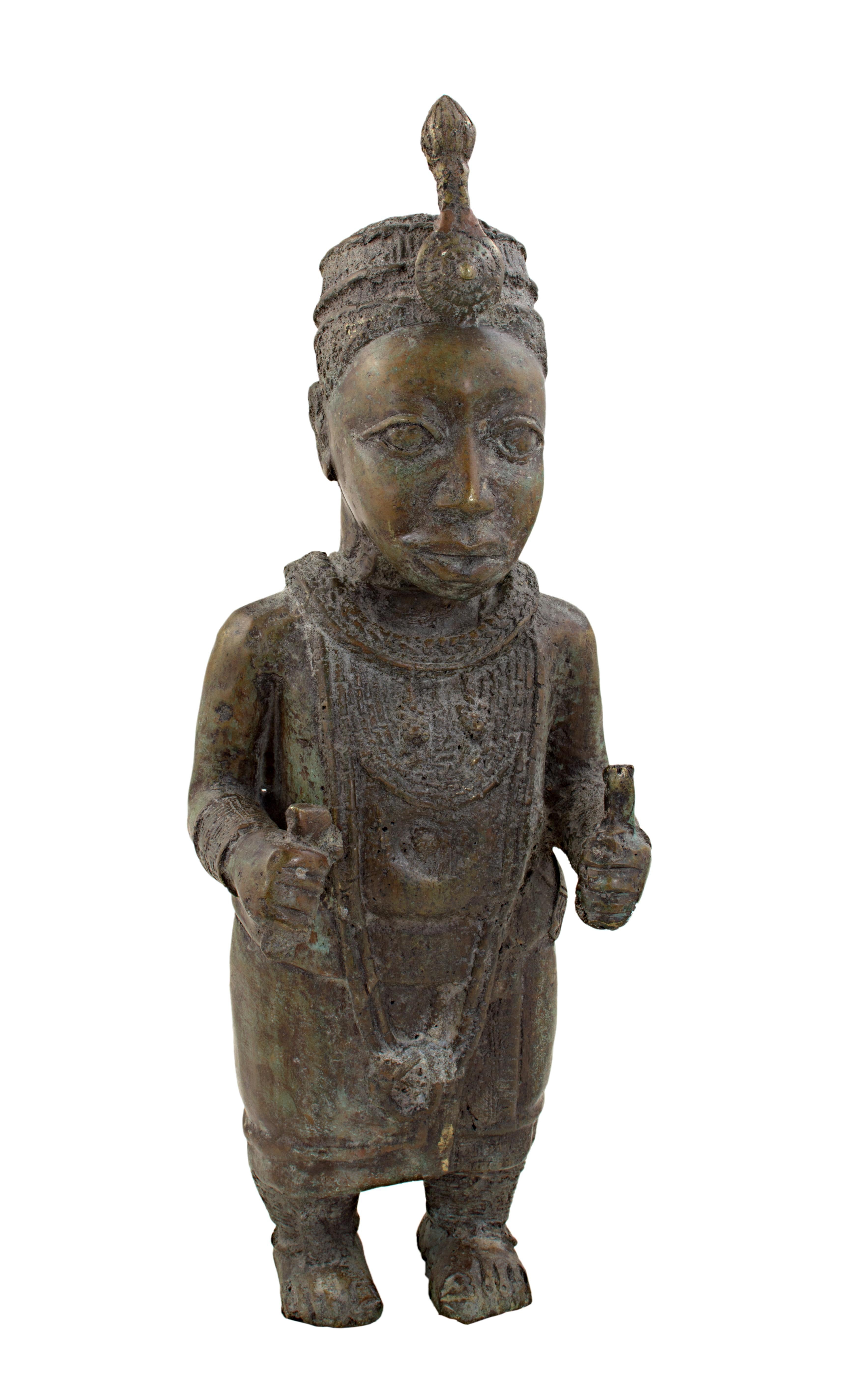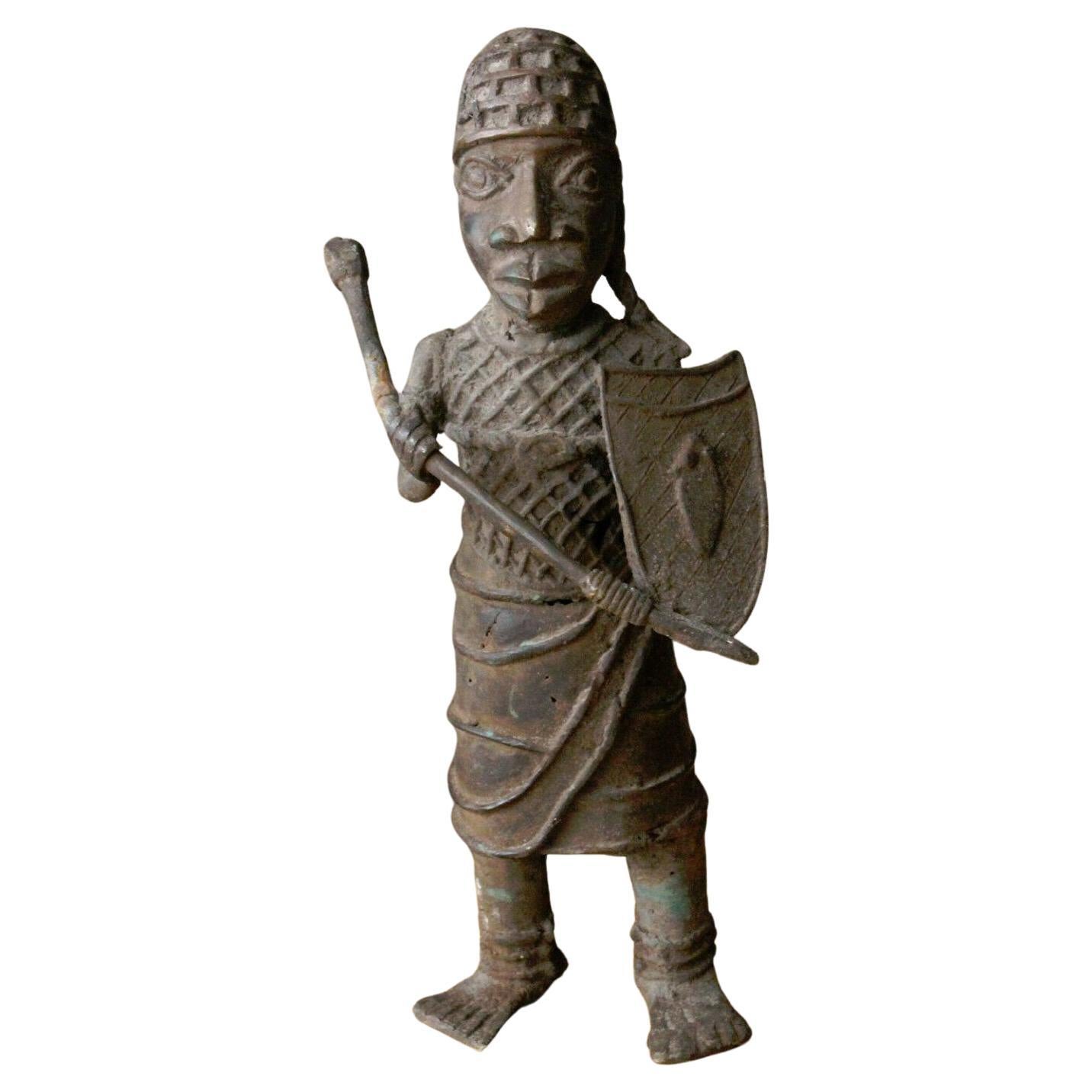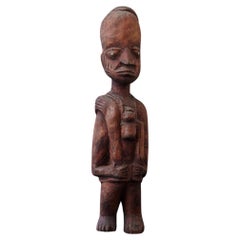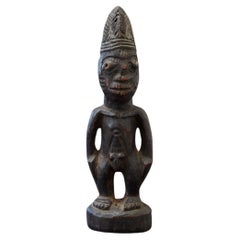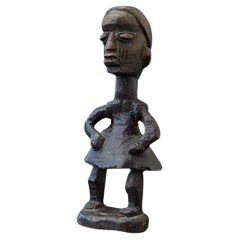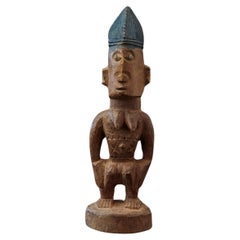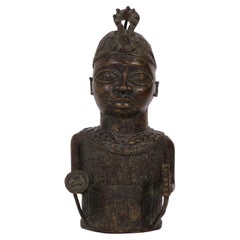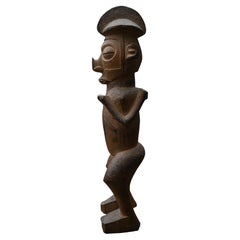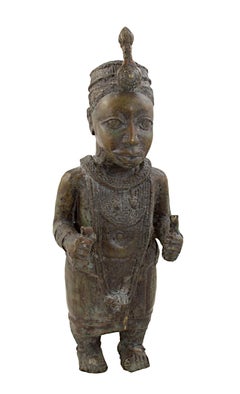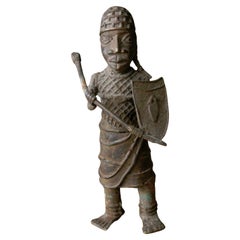Items Similar to Bronze Statue of a Juju Man, Benin, 1930s
Want more images or videos?
Request additional images or videos from the seller
1 of 17
Bronze Statue of a Juju Man, Benin, 1930s
$2,311.91
£1,730.22
€1,950
CA$3,189.48
A$3,546.84
CHF 1,862.88
MX$43,363.65
NOK 23,213.22
SEK 21,883.80
DKK 14,844.37
About the Item
Statues of Juju Man or shamans were used for ceremonies connected with religious beliefs and magical practices. The general understanding of their meaning as including a supernatural or magical power of bringing good to the owner or worshipper and of working harm to those to whom he or the power represented was not well disposed, is adequate for general purposes.
This statue depicts the Juju man holding a snake in each hand and having a person on his shoulder whispering a message in his ear.
The numbers are the inventory numbers from Penn State University and Lehigh University. Exhibited: The Pennsylvania State University - Museum of Art permanent collection; The Lehigh University - Art Galleries permanent collection. Provenance: The collection of Dr and Mrs John E. Swanson.
Dr John Swanson and his wife Marian lived from 1966 - 1981 in Lagos, Nigeria where Dr Swanson was the Advisor to the National Universities Commission and later on the Chief Planning Officer of the University of Ibadan, Nigeria.
During their time in Africa, the Swansons started to collect African art. In 1973 a part of their collection, circa 120 pieces went on loan to The Pennsylvania State University Museum of Art, where they remained until 1978.
In 1981 Dr Swanson passed away and his wife Marian never returned to Africa. In 1982 Mrs Swanson lent 130 pieces to the Lehigh University Art Gallery where they remained until 1987. A few pieces were also lent to Lafayette College - Williams Art Center for an exhibition titled "Plainly Geometric - Selections of Art from West Africa".
In 2018 Mrs Swanson passed away.
- Creator:People from Benin (Maker)
- Dimensions:Height: 12.6 in (32 cm)Width: 6.3 in (16 cm)Depth: 6.7 in (17 cm)
- Style:Tribal (Of the Period)
- Materials and Techniques:Bronze,Cast
- Place of Origin:
- Period:
- Date of Manufacture:circa 1930s
- Condition:Wear consistent with age and use. Minor losses. Minor fading. Very heavy for a statue of this size.
- Seller Location:Aramits, FR
- Reference Number:1stDibs: LU6432238767752
About the Seller
5.0
Vetted Professional Seller
Every seller passes strict standards for authenticity and reliability
Established in 2008
1stDibs seller since 2022
28 sales on 1stDibs
- ShippingRetrieving quote...Shipping from: Aramits, France
- Return Policy
Authenticity Guarantee
In the unlikely event there’s an issue with an item’s authenticity, contact us within 1 year for a full refund. DetailsMoney-Back Guarantee
If your item is not as described, is damaged in transit, or does not arrive, contact us within 7 days for a full refund. Details24-Hour Cancellation
You have a 24-hour grace period in which to reconsider your purchase, with no questions asked.Vetted Professional Sellers
Our world-class sellers must adhere to strict standards for service and quality, maintaining the integrity of our listings.Price-Match Guarantee
If you find that a seller listed the same item for a lower price elsewhere, we’ll match it.Trusted Global Delivery
Our best-in-class carrier network provides specialized shipping options worldwide, including custom delivery.More From This Seller
View AllCarved Wooden Statue of a Ju Ju Man, Egba People, Abeokuta, 1940s
Located in Aramits, Nouvelle-Aquitaine
Tall hand-carved wooden statue of a Ju Ju Man crafted by the Egba People in Abeokuta, Ogun State (part of Nigeria), circa 1940s.
The pupils are made from nails, which intensifies the...
Category
Vintage 1940s African Tribal Tribal Art
Materials
Wood
Ere Ibeji Male Commemorative Figure, Yoruba People, Nigeria, early 20th C
By Yoruba People
Located in Aramits, Nouvelle-Aquitaine
Yoruba people have one of the highest incidents of twin births in the world. As a result, twin children are regarded as extraordinary, divine beings protected by Sango, the deity of ...
Category
Early 20th Century Nigerian Tribal Tribal Art
Materials
Wood
Carved Wooden Statue of a Dancer "Queen Dancer", Egba People, Abeokuta, 1950s
Located in Aramits, Nouvelle-Aquitaine
A tall hand-carved statue of a dancer "Queen Dancer" crafted by the Egba People, Abeokuta, Ogun State, Nigeria, circa 1950s.
The statue is hand-carved in a rather rough way, not very...
Category
Vintage 1950s Nigerian Tribal Tribal Art
Materials
Wood
Ere Ibeji Female Commemorative Figure, Egba, Yoruba People, Nigeria, 20th C
By Yoruba People
Located in Aramits, Nouvelle-Aquitaine
Yoruba people have one of the highest incidents of twin births in the world. As a result, twin children are regarded as extraordinary, divine beings protected by Sango, the deity of ...
Category
Mid-20th Century Nigerian Tribal Tribal Art
Materials
Wood
Ere Ibeji Female Commemorative Figure, Yoruba People, Nigeria, early 20th C
By Yoruba People
Located in Aramits, Nouvelle-Aquitaine
Yoruba people have one of the highest incidents of twin births in the world. As a result, twin children are regarded as extraordinary, divine beings protected by Sango, the deity of ...
Category
Early 20th Century Nigerian Tribal Tribal Art
Materials
Wood
Bronze Head of an Oba, Yoruba People, 1950s
By Yoruba People
Located in Aramits, Nouvelle-Aquitaine
A Benin bronze of an Oba. Oba means ruler in the Yoruba language.
Wearing a lattice-pattern cap with strands of beads suspended around the head.
The neck is bound with a lattice-patt...
Category
Vintage 1950s Beninese Tribal Tribal Art
Materials
Bronze
You May Also Like
African Benin Bronze Sculpture
Located in Atlanta, GA
African Benin Bronze Sculpture, Africa, circa mid 20th Century. Beautiful casting with wonderful attention to detail. Solid, heavyweight...
Category
20th Century Beninese Tribal Figurative Sculptures
Materials
Metal, Bronze
Important Statue Of The Yaka Tribe, Dr Congo, early 1900
Located in Bilzen, BE
Important statue of the Yaka tribe, DR Congo from the beginning of the 20th century with a strong expression
Fair tribal patina
Height 35.5 cm
Provenance: Rob Vervoort (Belgium)
Category
Early 20th Century Congolese Tribal Tribal Art
Materials
Wood
"Bronze Statue - Ife, Nigeria, " Bronze Sculpture created circa 1920s
Located in Milwaukee, WI
"Bronze Statue - Ife, Nigeria" is a bronze sculpture created in circa 1920. This figure has short legs and a short torso, but a large head. They held out their hands with two objects...
Category
1920s Tribal Figurative Sculptures
Materials
Bronze
Monumental 19th Century Benin Oba Warrior Bronze Sculpture! Africa
By People from Benin
Located in Peoria, AZ
MAGNIFICENT!
BENIN OBA
19TH CENTURY BRONZE
WARRIOR SCULPTURE!
SUPERB EXAMPLE OF OBA METALWORK!
DIMENSIONS: APPROXIMATELY 13" TALL
CIRCA 1860-1900
Offered is a rare 19th cen...
Category
Antique Late 19th Century Beninese Tribal Figurative Sculptures
Materials
Bronze
$4,800 Sale Price
36% Off
Nigerian Igbo-Ukwu Bronze Statue
Located in Oostende, BE
Late 19th century Igbo-Ukwu bronze statue from Nigeria. Cire perdue technique.
Category
Antique Late 19th Century Nigerian Sculptures and Carvings
Materials
Bronze
Baule “Blolo Bian” Statue – Côte d’Ivoire, Early 20th Century
By Baule Tribe
Located in Bilzen, BE
Baule “Blolo Bian” Statue – Côte d’Ivoire, Early 20th Century
Height: 39 cm Material: Wood with dark, aged patina Provenance: Piasa, Paris, June 20, 2008
This elegant male figure,...
Category
Early 20th Century Ivorian Tribal Tribal Art
Materials
Wood
